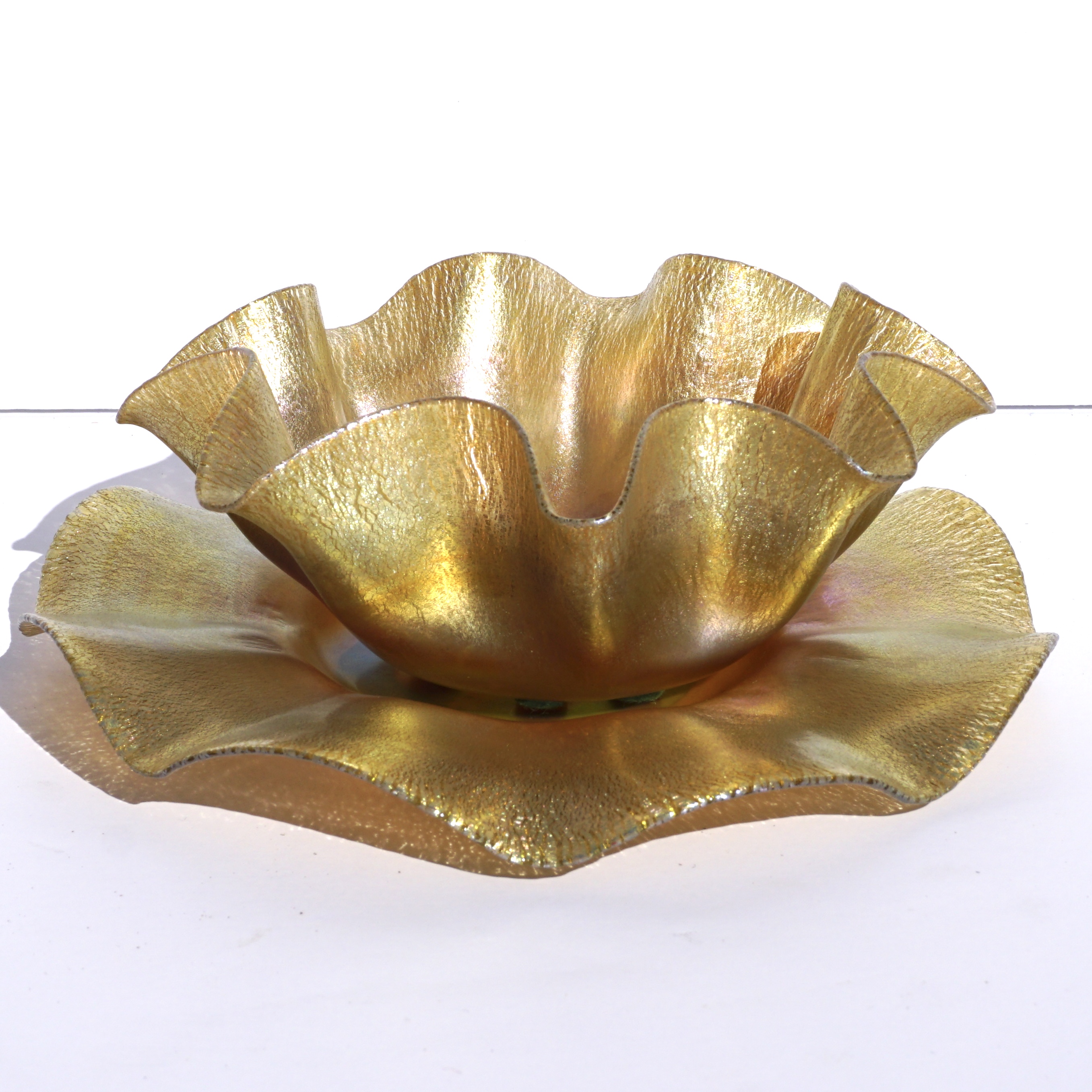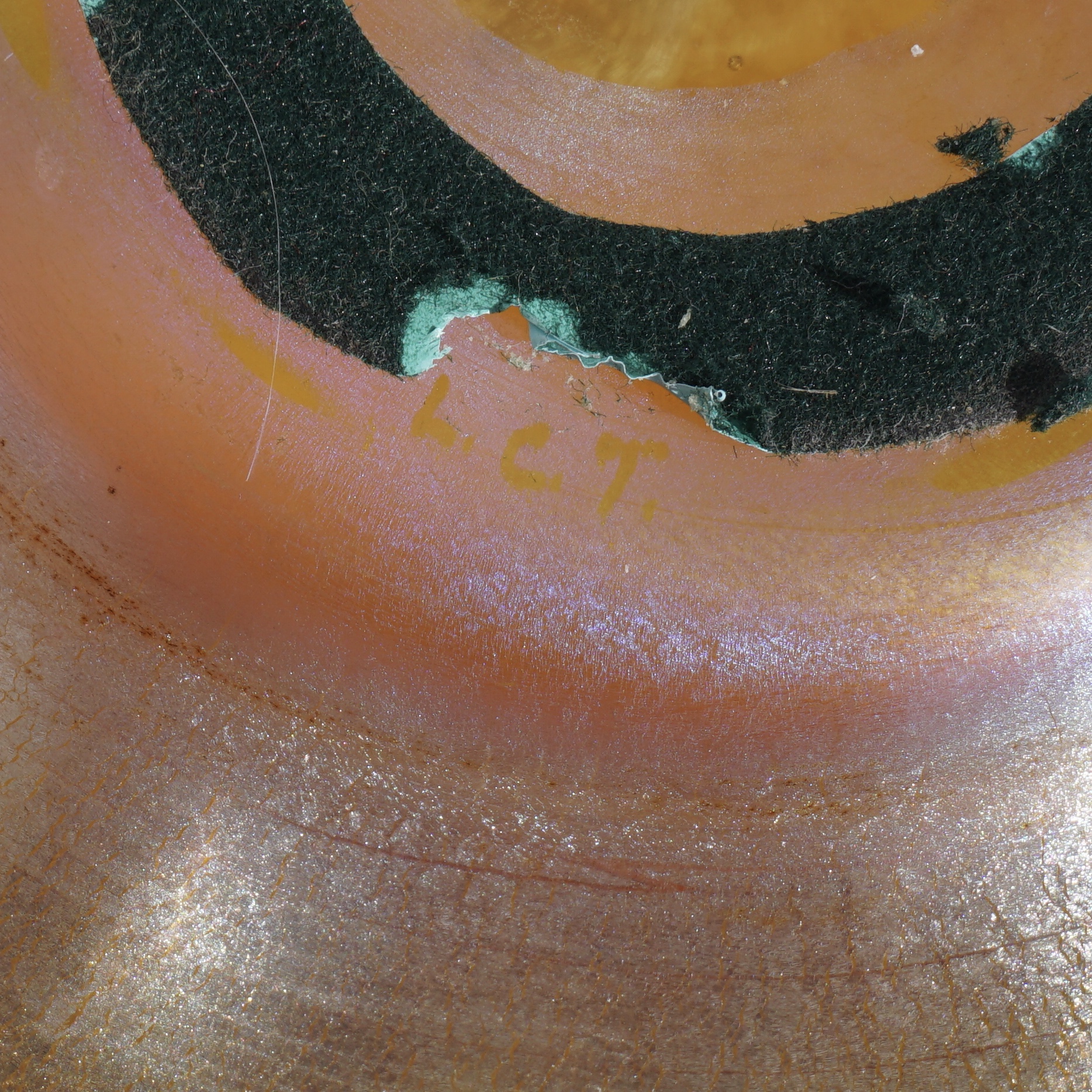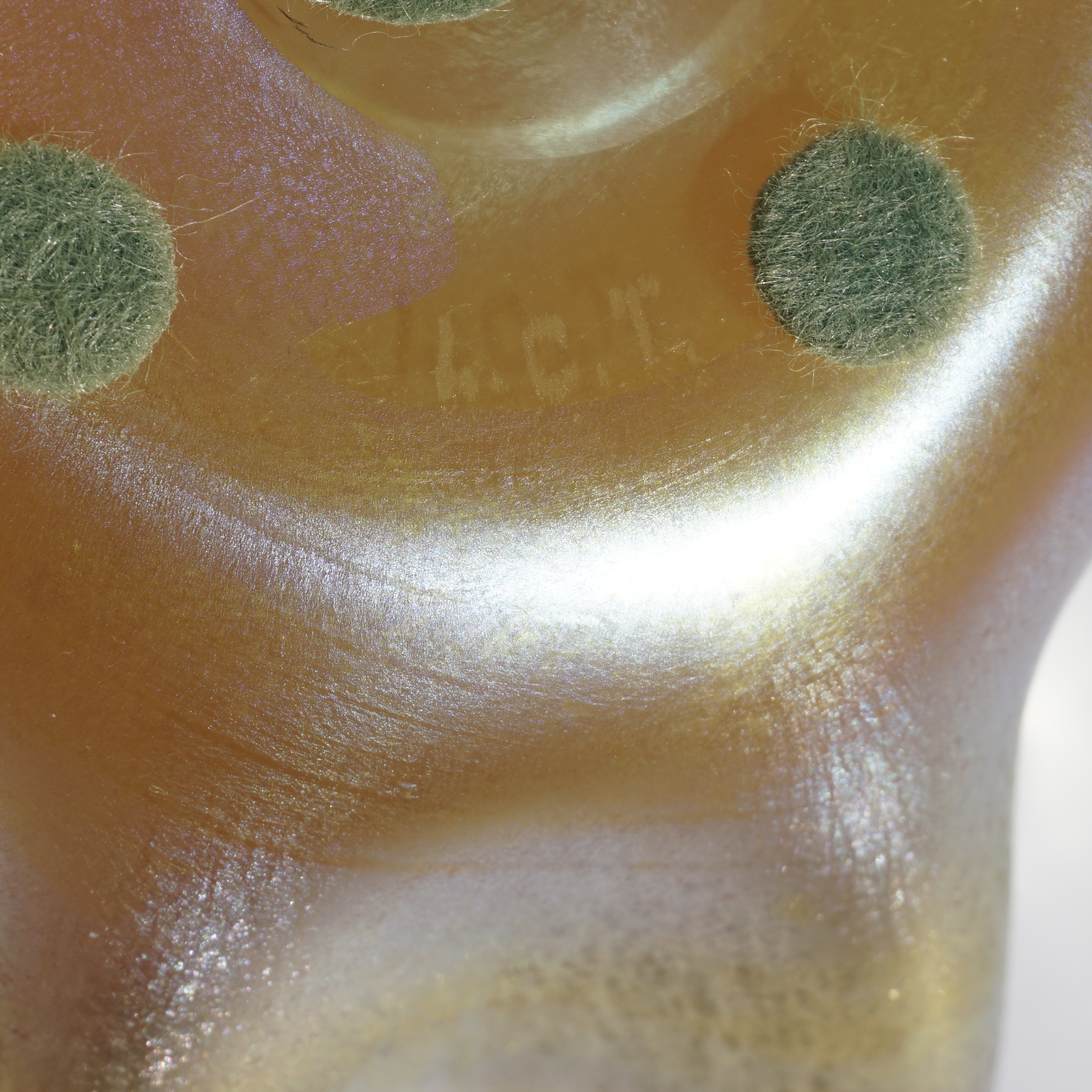Description
Louis Comfort Tiffany L.C.T. gold aurene stretched glass onion skin ruffle bowl, circa 1900
Bowl measures approximately 2.5 inches high by 6 inches wide (at the widest point). Plate measures approximately 7 inch diameter.
Outstanding original condition – no chips, cracks or repairs.
Signed ‘L.C.T.’ on the underside.
Louis Comfort Tiffany, (born Feb. 18, 1848, New York, N.Y., U.S.—died Jan. 17, 1933, New York, N.Y.), American painter, craftsman, philanthropist, decorator, and designer, internationally recognized as one of the greatest forces of the Art Nouveau style, who made significant contributions to the art of glassmaking.
The son of the famous jeweler Charles Lewis Tiffany, Louis studied under the American painters George Inness and Samuel Colman and also trained as a painter of narrative subjects in Paris. That he was also influenced by a visit to Morocco is evident in some of his major works. Returning to the United States, he became a recognized painter and an associate of the National Academy of Design, New York City; later he reacted against the Academy’s conservatism by organizing, in 1877, with such artists as John La Farge and Augustus Saint-Gaudens, the Society of American Artists.
Tiffany’s experiments with stained glass, begun in 1875, led to the establishment three years later of his own glassmaking factory at Corona in Queens, N.Y. By the 1890s he was a leading glass producer, experimenting with unique means of colouring. He became internationally famous for the glass that he named Favrile, a neologism from the Latin faber (“craftsman”). Favrile glass, iridescent and freely shaped, was sometimes combined with bronzelike alloys and other metals; such examples, some signed “L.C. Tiffany” or “L.C.T.,” enjoyed widespread popularity from 1890 to 1915 and were revived again in the 1960s. His Favrile glass was admired abroad, especially in central Europe, where it created a new fashion.











